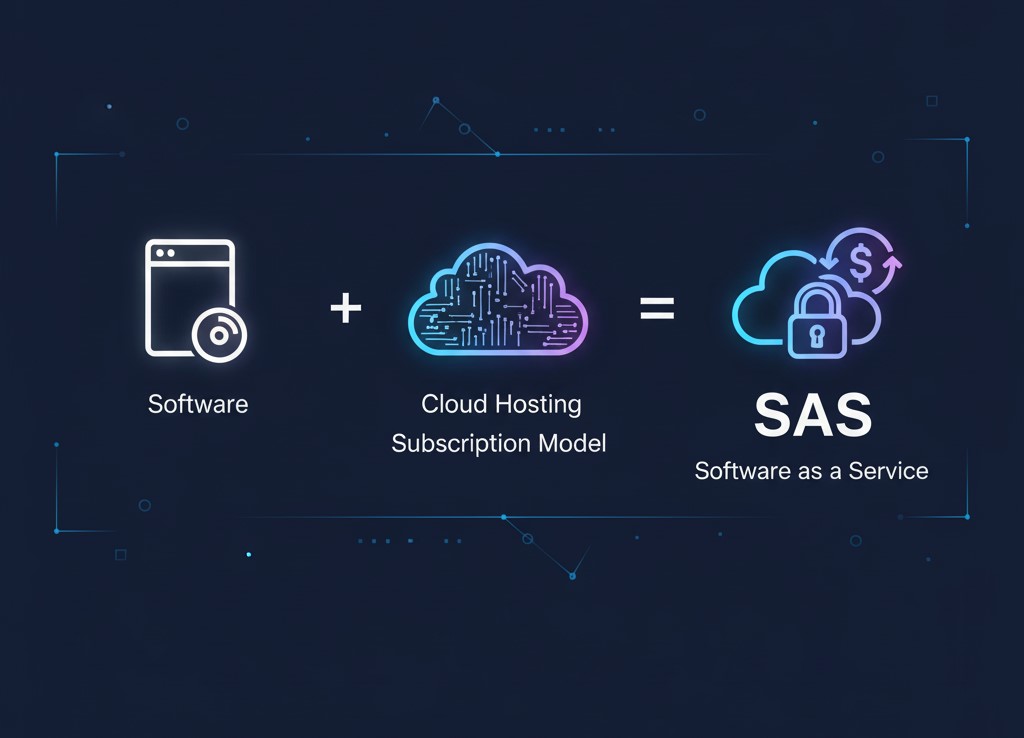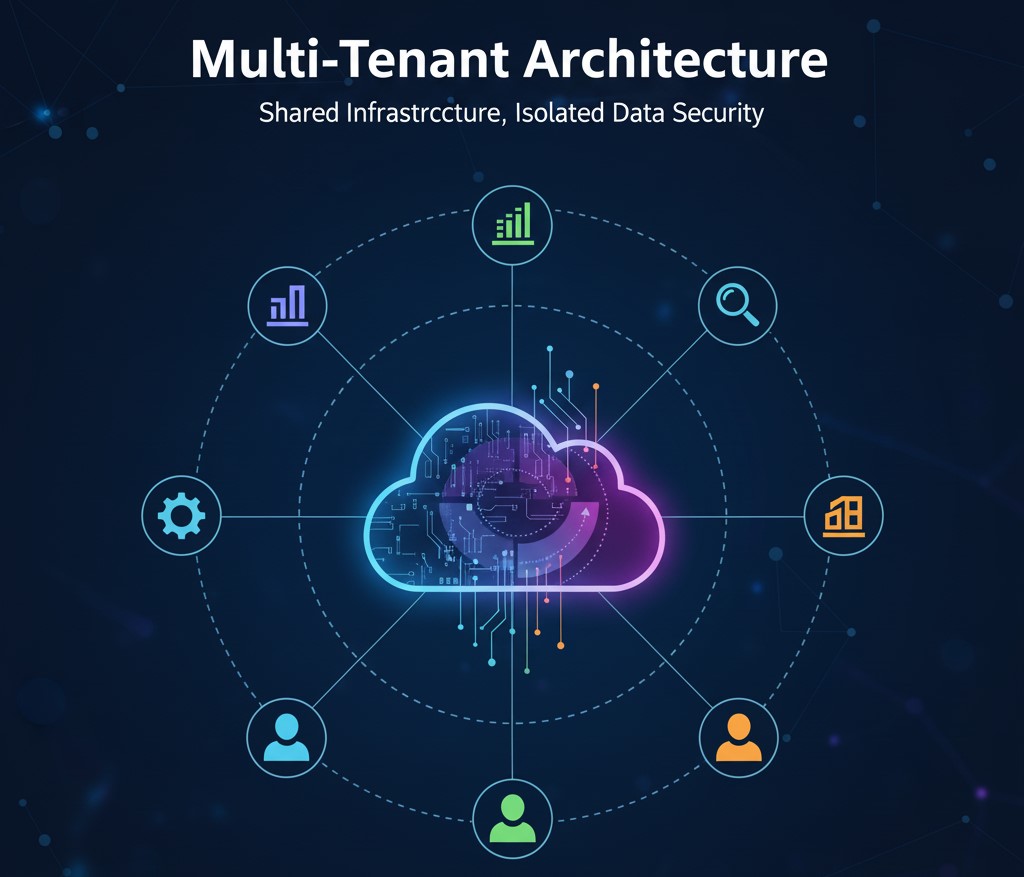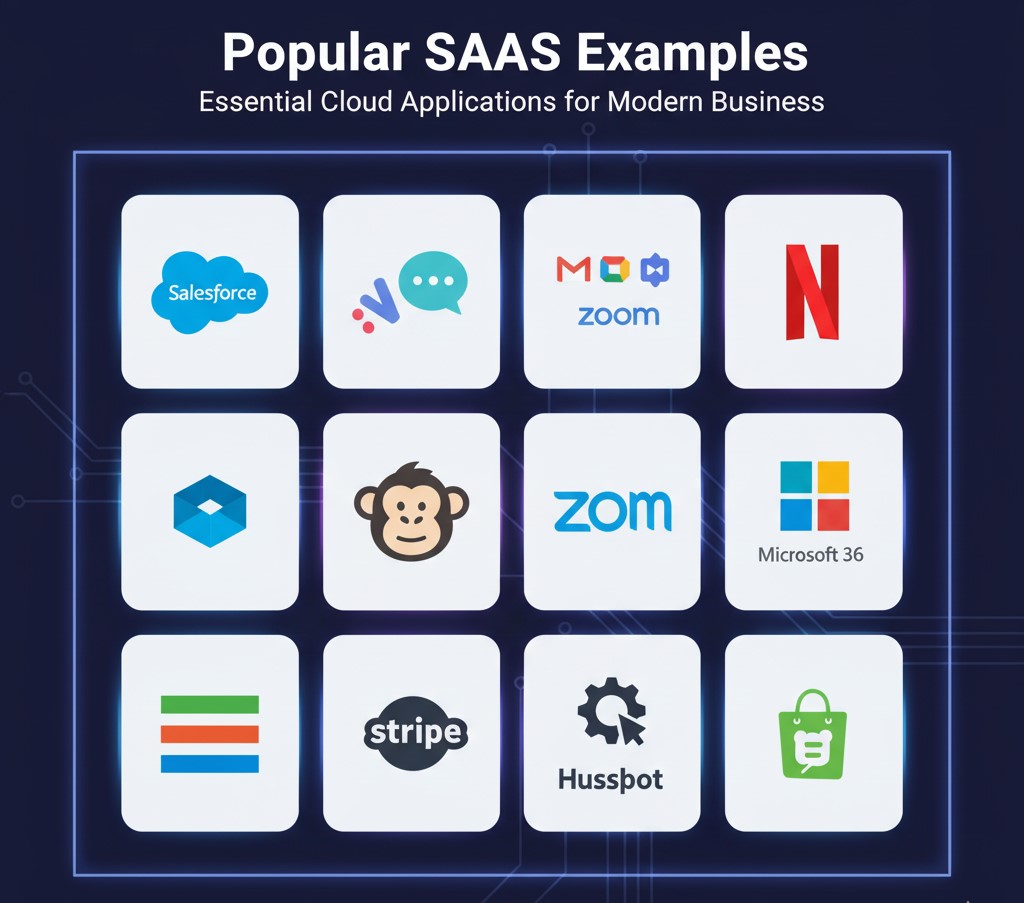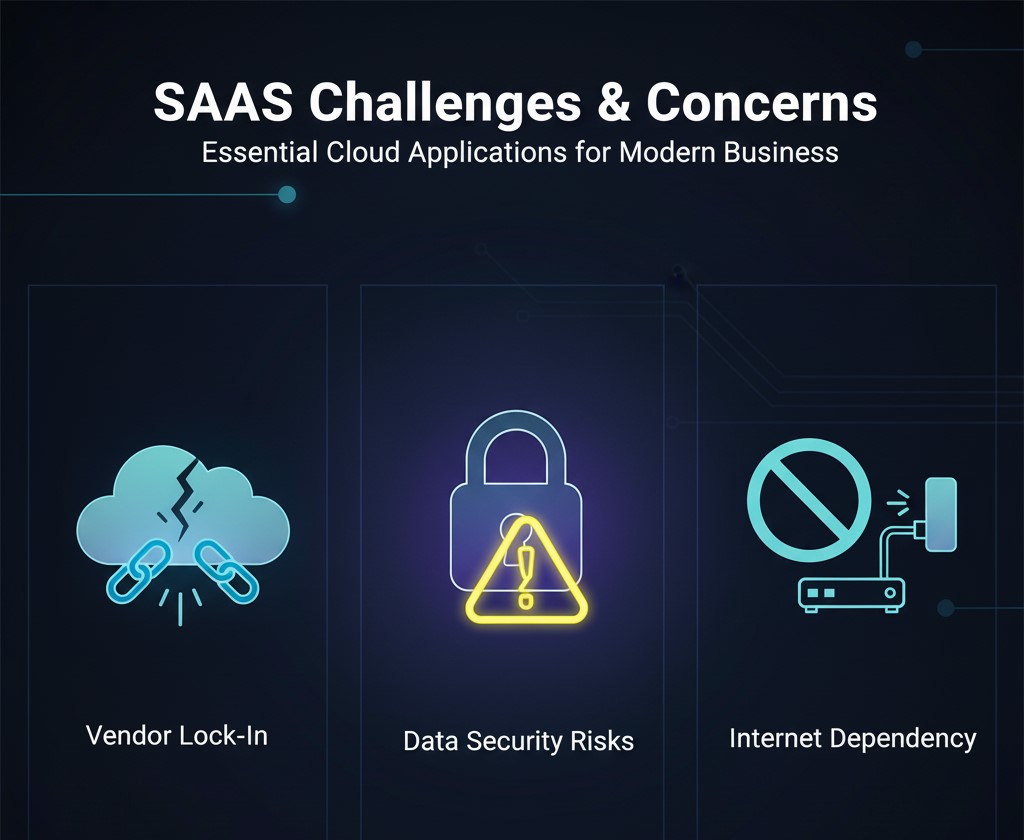I. Introduction: The Death of the Disk and the Rise of the Cloud
Remember the days of buying software in a box? You’d pay hundreds of dollars upfront, juggle licensing keys, and spend hours updating every computer in the office. If your hard drive crashed, you’d have to start all over.
Thankfully, that era is over. Today, the vast majority of businesses and individuals rely on a revolutionary model that has transformed how we use technology: Software as a Service (SaaS).
SaaS is much more than just a tech trend; it’s a fundamental shift in how software is delivered and paid for. It’s what powers everything from your email to your enterprise resource planning (ERP) system. Whether you’re a startup founder looking for cost-effective tools or an IT manager seeking scalability, understanding this model is essential for success in the digital age.
Ready to demystify the cloud and learn how this powerful technology can streamline your operations? Let’s dive into the complete guide to SaaS explained.
II. What Exactly is Software as a Service (SaaS)?
In the simplest terms, SaaS is a cloud-based software delivery model where a service provider hosts the application and makes it available to customers over the Internet. Instead of purchasing and installing the software locally (known as on-premise software), users rent the software, typically on a recurring monthly or annual subscription model.
The key takeaway is this: You rent the service; the vendor manages the entire stack.
This model shifts the financial burden and technical responsibility away from the end-user. You no longer worry about servers, operating systems, backups, or maintenance—the SaaS vendor handles it all, ensuring you always have the latest, most secure version of the application.
The Core Components of the SaaS Model
The SaaS definition is built on three core pillars:
- Cloud Hosting: The application and all customer data reside on the vendor’s remote servers, often leveraging third-party cloud computing platforms like AWS or Azure.
- Subscription Licensing: Customers pay a recurring fee (OpEx) instead of a large, one-time purchase price (CapEx). This makes powerful software accessible to businesses of all sizes.
- Internet Delivery: The software is accessed via a standard web browser or a dedicated mobile app, eliminating the need for local installation files.

III. How Does SaaS Work? The Technical Breakdown
The magic of SaaS lies beneath the hood, in the provider’s server architecture. Understanding this makes it clear why it’s so efficient and scalable.
The application runs on the provider’s centralized servers. When you log in via your web browser, you are simply accessing that remote application. The provider is responsible for every layer of the technology stack, including:
- The application code itself
- The data storage and databases
- The operating systems and middleware
- The networking and servers
The Role of Multi-Tenancy
Most SaaS applications utilize a multi-tenant architecture. This is a highly efficient design that is crucial to the model’s cost-effectiveness.
- A single instance of the application and its underlying infrastructure serves multiple customers (or “tenants”). Think of it like an apartment building: all residents share the same plumbing, electricity, and foundation (the core software), but each unit has its own private, secure space (their data).
- Multi-Tenant Architecture Diagram. Show a single cloud/server icon connected to multiple customer logos/accounts with separated data layers, illustrating shared resources but isolated data.
This architecture allows the vendor to maintain one version of the software, making updates instant and seamless for all users, driving down reducing IT costs across the board.

IV. The Top 5 Benefits of Switching to SaaS
For modern businesses, the reasons to choose SaaS go beyond mere convenience. They translate directly into business agility and financial efficiency.
| Cost-Effectiveness | Eliminates large upfront capital expenditures (servers, licenses). The subscription model offers predictable monthly budgeting. |
| Scalability | Easily adjust your resources up or down on-demand. Need to add 50 new users during peak season? It takes seconds, not weeks of hardware installation. |
| Widespread Accessibility | Access the application and your data from any device, anywhere, with an internet connection. This is the cornerstone of supporting a mobile and remote workforce. |
| Reduced IT Burden | The vendor handles all infrastructure, updates, maintenance, and security patches. This frees up your in-house IT team to focus on strategic digital transformation projects. |
| Automatic Updates | You always have the latest version. The vendor releases new features and crucial security patches automatically, eliminating the need for manual, disruptive installations. |
Why SaaS is Perfect for Startups and Small Business
For startups, SaaS levels the playing field. How does SaaS work for small business? It grants them instant, affordable access to enterprise-level tools (like high-end CRM or accounting software) that were once only available to large corporations due to the massive initial investment required.
V. SaaS vs. The World: PaaS, IaaS, and On-Premise
To truly grasp Software as a Service, it helps to see where it fits within the larger cloud computing ecosystem, which includes Infrastructure as a Service (IaaS) and Platform as a Service (PaaS).
Think of cloud services using a simple analogy: The Pizza as a Service Model.
| Model | Analogy | What You Manage | What the Vendor Manages |
| On-Premise | Making pizza from scratch at home. | Everything (Oven, Ingredients, Table, Wine). | Nothing. |
| IaaS (Infrastructure as a Service) | Buying a frozen pizza. | Ingredients/Toppings (Apps/Data), Table, Wine. | The Oven (Servers, Network, Storage). |
| PaaS (Platform as a Service) | Ordering a pizza kit (dough, sauce, cheese). | Toppings (Apps/Data), Table, Wine. | The Oven, The Fire (OS, Runtime, Middleware). |
| SaaS (Software as a Service) | Ordering a fully cooked, delivered pizza. | The Table and the Wine (User access, your data). | Everything (Application, OS, Servers, Storage). |
As the diagram illustrates, SaaS offers the highest level of service and the lowest level of responsibility for the user.
VI. Common SaaS Examples and Use Cases
You likely use SaaS every single day without even realizing it. The world of internet-based services is massive and continues to grow with the integration of new technologies like Artificial Intelligence (AI).
Customer Relationship Management (CRM)
CRM software, like Salesforce or HubSpot, manages customer interactions, sales pipelines, and marketing efforts. They were one of the earliest and most successful pioneers of the SaaS model.
Productivity and Collaboration
Tools like Microsoft 365 (Word, Excel online), Google Workspace (Docs, Sheets), Slack, and Zoom are all prime SaaS examples. They have defined the modern, collaborative workplace.
Specialized Tools
SaaS dominates vertical markets, offering specialized tools for Finance & Accounting Software (e.g., QuickBooks Online, Xero), Marketing Automation, and Human Resources.

VII. Key Challenges and Concerns with SaaS
No technology is without its drawbacks, and it’s important to enter the cloud computing world with eyes wide open.
Dependence on Internet Connectivity
The most obvious drawback: if the internet goes down, so does your access to the application. While many providers offer limited offline mode, a stable connection is non-negotiable.
Data Security and Vendor Lock-in Concerns
When using cloud-based software, you hand over control of your data to the vendor. This makes reviewing their data security protocols, audit reports, and the Service Level Agreement (SLA) absolutely critical. Furthermore, vendor lock-in (the difficulty of migrating massive amounts of data to a new provider) is a serious concern that requires careful planning.

VIII. How to Choose the Right SaaS Tools for Your Business
For any business, the decision of how to choose a SaaS provider must be strategic, not impulsive.
Assessing Integration Capabilities
Ensure the potential software offers robust API integration. A new tool is only valuable if it can seamlessly communicate with your existing ecosystem (e.g., your CRM needs to talk to your accounting software).
Reviewing the Service Level Agreement (SLA)
Always read the SLA. This document legally binds the vendor to certain performance metrics, such as guaranteed uptime (often 99.9%), disaster recovery procedures, and response times for support. If a service is critical to your operations, the SLA provides crucial protection.
IX. Maximizing Your ROI with SaaS Deals
The subscription model offers flexibility, but for long-term growth, finding cost-saving solutions is key. This is especially true for rapidly growing companies looking to optimize their operating expenses (OpEx).
One of the smartest ways to reduce the lifetime cost of software is by leveraging lifetime deals or one-time payment options for powerful tools.
For businesses looking for cost-effective, long-term software solutions, visiting OfferLooters (https://offerlooters.com/) is a great starting point, as we regularly showcase top-tier software and tech deals, including lifetime licenses from platforms like AppSumo. This approach allows you to secure the scalability and automatic updates of the SaaS model without the burden of endless recurring payments, maximizing your return on investment (ROI).
X. Conclusion: The Future is Cloud-Native
The era of Software as a Service is not a passing trend; it is the infrastructure upon which the modern economy is built. By delivering applications with unprecedented efficiency, SaaS has enabled businesses of every size to access powerful tools, scale effortlessly, and focus their resources on their core mission rather than on IT maintenance.
Whether you’re exploring the differences between PaaS vs IaaS vs SaaS or hunting for the next great productivity tool, the cloud offers solutions for virtually every need.
Now is the time to embrace the flexibility and power of this model. Start your journey by exploring the latest deals and reviews—you might just find your next indispensable SaaS application waiting for you.
Frequently Asked Questions (FAQs)
What is the difference between SaaS and on-premise software?
SaaS is hosted by a vendor and accessed online via a recurring subscription model, with the vendor handling maintenance. On-premise software is installed locally on a company’s own servers, requiring a large upfront purchase and in-house IT management for updates and maintenance.
What does ‘multi-tenancy’ mean in SaaS architecture?
Multi-tenancy is the technical concept where a single instance of the software application and its supporting infrastructure serves multiple different customers (or ‘tenants’). Crucially, while resources are shared for efficiency, each customer’s data and customizations remain logically separated and secure.
Is SaaS suitable for small businesses and startups?
Yes, SaaS is highly suitable for small businesses and startups due to its lower upfront costs, instant deployment, and flexible scalability. The pay-as-you-go model allows them to access enterprise-level tools affordably without the need for significant initial IT infrastructure investment.
How does SaaS handle automatic updates and maintenance?
The SaaS provider is solely responsible for application maintenance. This includes all bug fixes, security patches, and feature upgrades, which are deployed automatically and simultaneously to all users, ensuring everyone always has access to the most up-to-date and secure software version.
What is a Service Level Agreement (SLA) in the context of SaaS?
The Service Level Agreement (SLA) is a legal contract between the SaaS provider and the customer that guarantees a specific level of service. It defines key metrics like guaranteed uptime (often stated as 99.9% availability), data security standards, and the level of technical support the customer can expect.